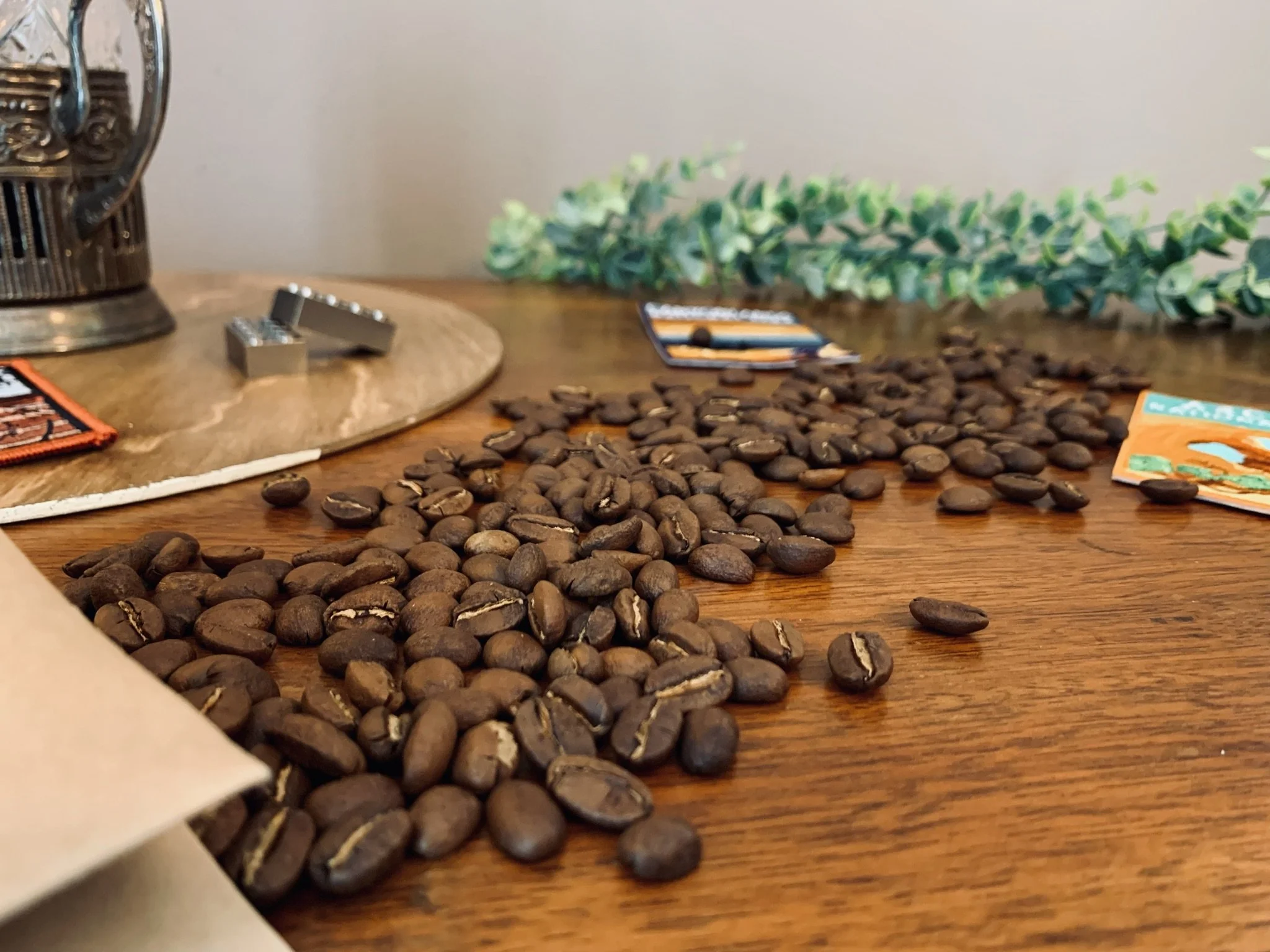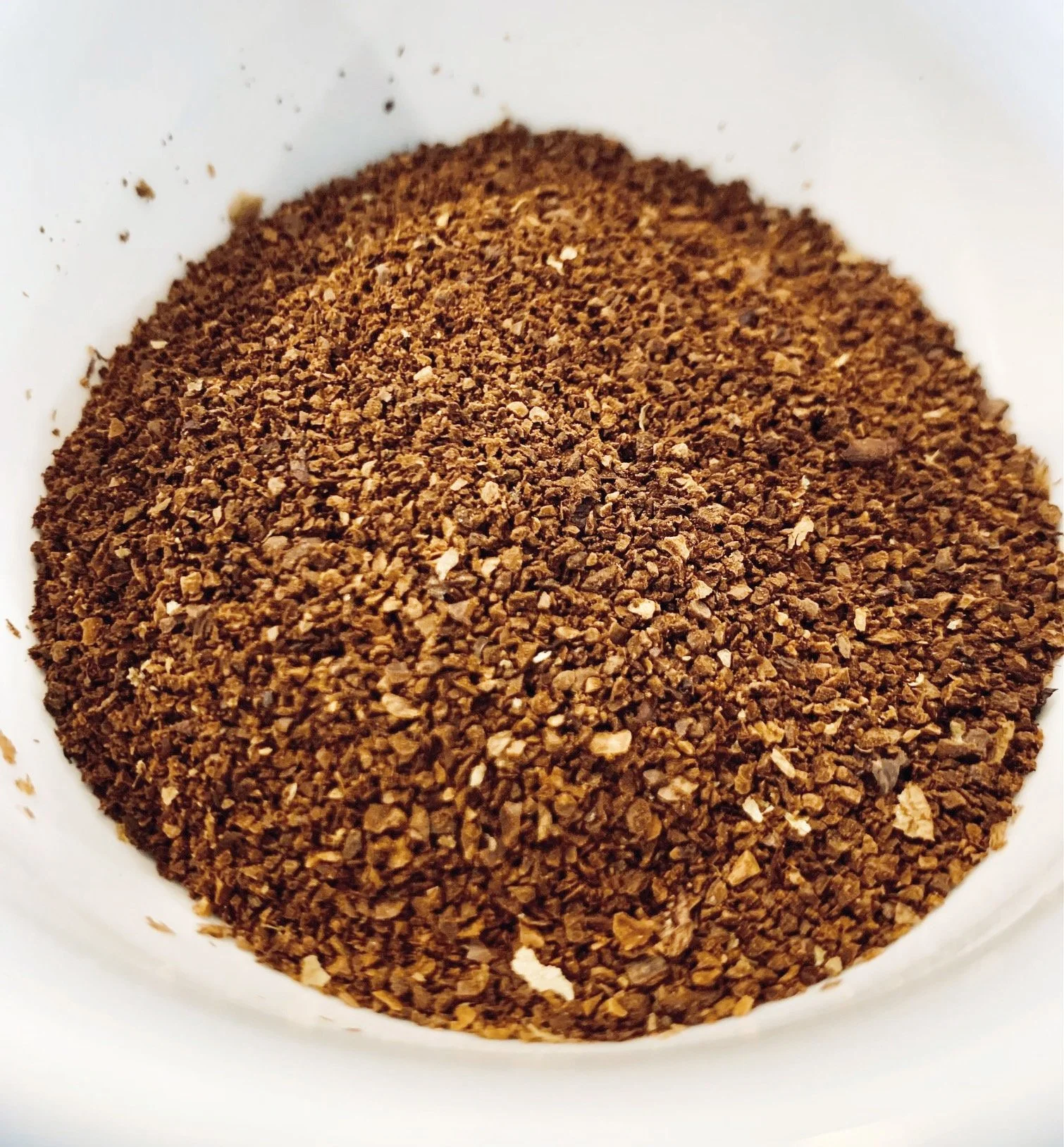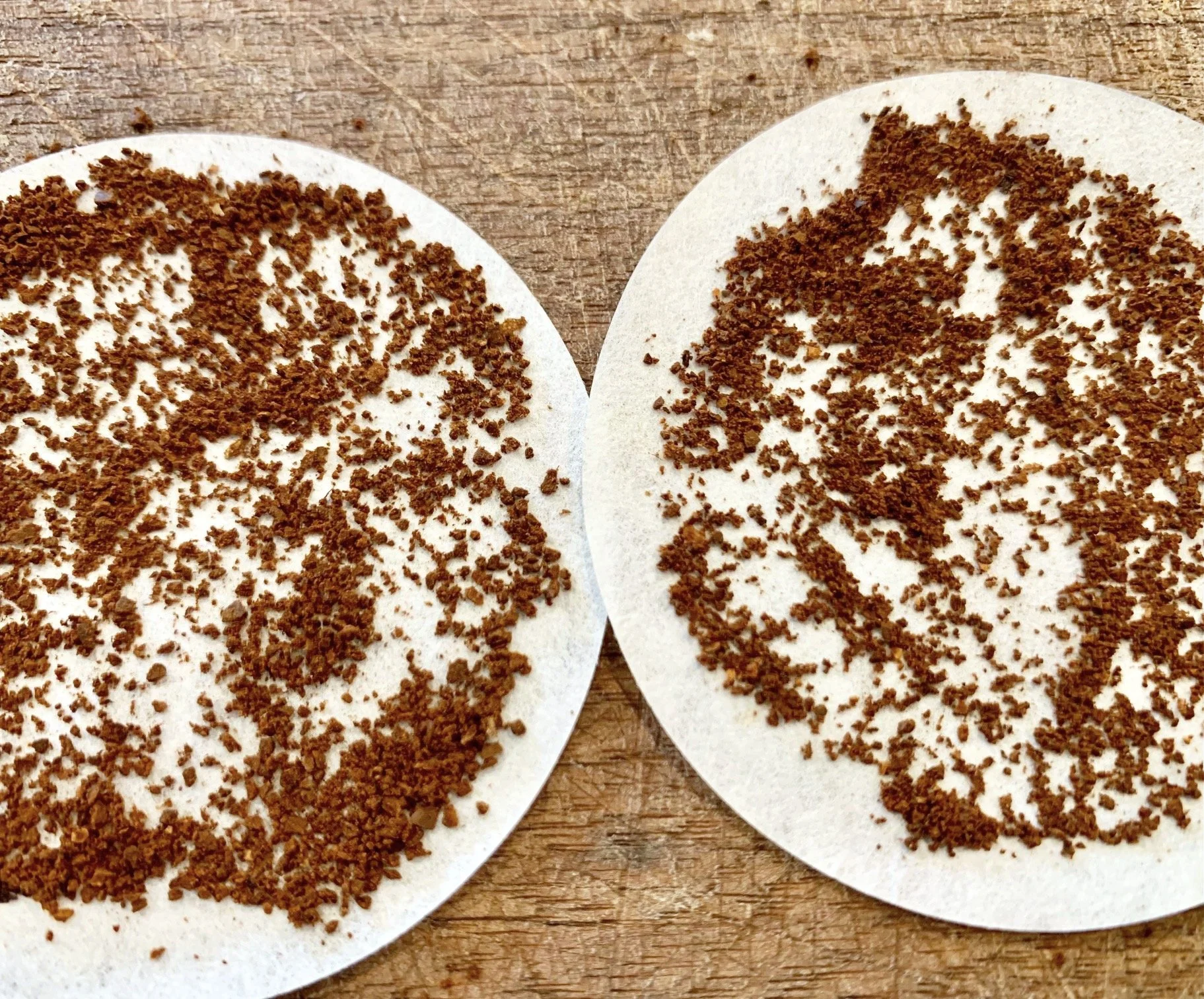
Grind Guide
The Importance of the Grind
Grinding is one of the most important factors that a coffee drinker can control themselves. When ground, the small roasted coffee beans are cut, smashed, and shattered into thousands of little pieces. In some cases like with a Turkish grind, hundreds of thousands of tiny motes of coffee powder are created. The aroma from freshly ground coffee is one of the best experiences of drinking coffee and is exactly why buying coffee as whole bean and grinding it just before brewing is ideal. The longer the tiny, ground coffee particles are exposed to air the more they release their aroma (we want that in our coffee, not in the air), allow oxygen to stale the organic compounds, and cause the oils to turn rancid.
Even if one doesn’t want to grind their own coffee, there is still some foundational knowledge that can help improve a coffee’s flavor. The size of the grind and type of grinder can have a large impact on the final flavor profile. We hope this guide helps extract the most out of our specialty coffee offerings.
Should I grind my own?
We know having a grinder at home can be a large expense and perhaps an inconvenience that gets in the way of a groggy morning routine. There is a flavor difference between freshly ground coffee compared to coffee that was ground several days ago. Unlike most store-bought coffee, our coffee is not ground right out of the roaster, packaged, and then put on a shelf for months. We grind our coffee to order and heat seal the bag to provide as much long-lasting freshness as possible. So, you can be sure that if you are going to have pre-ground coffee then ours is about as fresh as possible without grinding it yourself.
Grind Size
The size of the grind depends on the brew method, the type of coffee, and the flavor desired out of the final cup. Grind size can have a major impact on the taste and texture of the coffee. Even if one isn’t going to grind their own it is important to know which grind size to have the roaster or retailer grind for. We provide guidance in our brew guide for several popular brew methods and recipes. Adjusting the grind to preference over time using a few easy tips can help get the most out of a coffee.
When to grind coarser: If a brew tastes bitter, astringent, or harsh then grinding coarser could help mellow the extraction. The larger the coffee particles, the harder it is to fully extract. Therefore going coarser can help with the problem of over extraction. When a coffee is over extracted then it means all the good qualities of coffee have been pulled out and the brew is starting to pull bittering compounds out of the coffee which leads to harsh tasting cups. Going coarser typically reduces fine coffee particles. This helps reduce grainy and bitter tastes in methods that do not use a paper filter, like French press or some types of cold brew.
When to grind finer: If a brew leans toward weak, sour, or tart then the grind may need to go finer. The smaller the coffee particles the more surface area there is for water to act on the coffee. Therefore going finer can help cure under extraction, which means the brew didn’t get a balanced portion of coffee from the grounds. Sour compounds more easily extract than bitter compounds, so an under extracted brew will tend toward sour.
We typically recommend grinding finer until the brew is harsh, then back off a bit. That means we get the maximum extraction of flavor without too much bitterness. But as always, use your taste buds as a guide. Everyone enjoys coffee in their own way!
Grind Size Distribution
While grind size is easy to adjust at the grinder, grind size distribution is not something that is as easy to control. We don’t recommend fretting too much about distribution in a daily coffee brew. It is a good topic to be knowledgeable on especially when considering purchasing a coffee grinder because different grinders provide different types of distributions which can impact the type of flavor profile a cup of coffee has.
It may be hard to tell without zooming in, but the image shows the difference between a tight distribution (on the right) and a wide distribution (on the left.) The distribution measures how similar the coffee particle sizes are to one another. If it is a tight distribution then the particles are closer to the same size while a wide distribution would have some large particles mixed with some fine particles and everything in between.
One is not necessarily better than the other. It depends on what type of flavor profile is wanted. A wide distribution will give a more complex but less distinct cup while a tight distribution will highlight clarity of flavor but could be thinner with less body. The type of grinder and burr will determine this distribution.
Grinder and Burr Style
There are a wide range of grinders available to coffee lovers from $20 blade grinders to $5000 high volume cafe grinders. Most quality home-focused coffee grinders are in the $99-$399 range. Discussing all the intricate features separating the wide variety of grinder options is outside the scope of this guide, but a major factor influencing the taste of a cup of coffee is the type of burr used in the grinder.
Conical Burr: Most lower end grinders you’d find at a department store use a conical burr. This isn’t because conical burrs are lower quality, but because they are less prone to alignment issues (cheaper to manufacture in volume) than their larger diameter flat burr siblings. Conical burrs tend to produce more fines and tend to have a wider grind distribution than flat burrs. This tends to create a more complex cup of coffee with more body and reduced acidity but lacks the bright clarity of flavor that flat burrs tend to offer.
Flat Burrs: These burrs are increasing in popularity due to their ability to extract very distinct flavor notes found in quality coffee. Some high end specialty coffees have flavor notes such as “blueberry, mango, jasmine, and orange.” While a conical burr or a wide distribution burr may only provide a general flavor such as “fruit, citrus, or floral”, a high quality flat burr would be able to distinctly reveal those notes in the coffee. With such clarity does come with what some people may consider as drawbacks. Flat burrs tend to have less body, more punchy acidity, and can be harder to dial in.
We use a large 98mm flat burr grinder to grind coffee to order. We constantly ensure alignment so that the coffee is well distributed for general use.
Flat vs conical burr by Baratza




